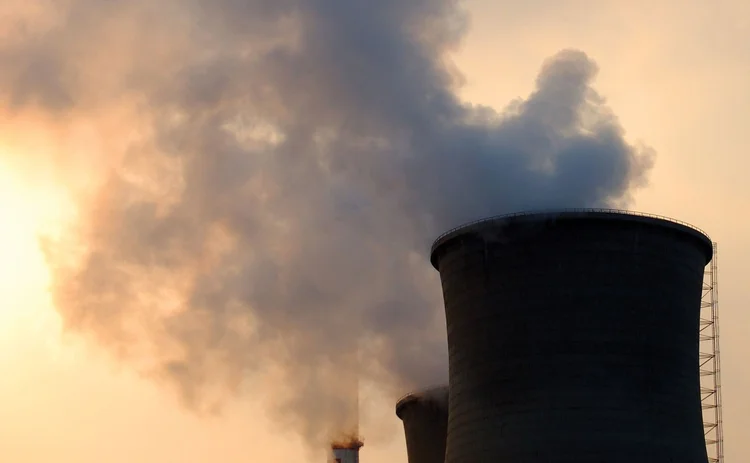
Brexit roils UK electricity firms’ carbon hedging plans
Utilities may unwind hedges amid uncertainty over EU emissions market

Need to know
- Brexit casts doubt on the UK's future participation in the European Union's carbon market, called the Emissions Trading System (EU ETS).
- The uncertainty means UK firms do not know whether they will be able to use EU allowances (EUAs) following the UK's exit from the bloc, which could happen as early as 2018.
- If this doesn't become clear early on in Brexit negotiations, UK firms may unwind their carbon hedges, traders and analysts say.
- Many UK utilities are hedged out for three years, and analysts estimate that around 100 million tonnes of carbon could be returned to the market if such firms decide to unwind hedges, which would push EUA prices below €4 per tonne.
- Prolonged uncertainty over the EU ETS could also impact power trading, as firms would not want to lock in forward electricity prices with no way of locking in the cost of carbon as well.
The UK's vote to leave the European Union casts doubt over the country's future participation in the EU carbon market, called the EU Emissions Trading System (ETS), and it is hindering UK energy firms' ability to manage their exposure to carbon prices from now on, traders and analysts say.
"Brexit has created a huge amount of uncertainty across the scheme," says Fred Payne, a London-based energy and carbon dioxide trader at CF Partners, a commodity trading firm. "It's difficult for participants to plan ahead when no-one knows if the UK will remain a market participant or not."
Historically, the UK has been an active supporter of the EU ETS, a cap-and-trade scheme that has created the world's largest market for trading greenhouse gas emissions. A cornerstone of European climate change policy, the ETS sets a cap on the emissions of more than 11,000 installations across 31 countries and gradually reduces that cap in line with bloc-wide targets. Each year, firms covered by the scheme must surrender emissions credits – called EU allowances (EUAs) – for each tonne of carbon they release. Allowances may be traded between companies and, in theory, a steadily tightening cap creates a shortfall of EUAs and leads to emissions reductions.
Against that backdrop, the UK has always taken a relatively large share of the overall ETS cap. Last year, installations in the UK accounted for 1.6 billion tonnes, or 10.5%, of total verified emissions in the ETS, according to a June 30 report by law firm Reed Smith.
Thus, the Brexit referendum on June 23 had an immediate impact on the market, as the results of the vote cast doubt on the future participation of UK firms and the allowances they currently held. From June 23-24, the closing price of EUA futures for December 2016 delivery on Ice Futures Europe fell from €5.65 per tonne of carbon (/tonne) to €4.96/tonne, a 12% drop. Since then the contract has slipped further, closing at €4.79/tonne on July 13 (see figure 1).

Under Article 50 of the Lisbon Treaty, a country that opts to exit the EU will remain a member of the EU for two years while it negotiates its future trade relations with the bloc. That means business as usual for ETS market participants until 2018, the earliest that the UK may pull out, analysts say. But beyond that time frame, nothing is clear.
That uncertainty poses a challenge for the 780 power generation and industrial installations in the UK that are covered by the trading scheme. At present, the owners of these installations do not know whether they will be able to use EUAs to meet their compliance obligations after Brexit. Carbon market specialists say that utilities – which are the biggest buyers of EUAs – typically hedge forward three years, meaning they are now sitting on around one year's worth of uncertain post-Brexit allowances. Likewise, many industrial firms have banked EUAs in hopes of using them for compliance beyond 2018.
"Firms now face the risk that EUAs they have already bought will become invalid after Brexit, meaning they will be no good for compliance and therefore for hedging carbon exposure," says Louis Redshaw, director of Redshaw Advisors, a London-based carbon advisory firm. "What all companies want to know is whether what they are buying is going to be good for compliance."
Flooding the market
If the Brexit negotiations led by the government of new UK prime minister Theresa May do not provide clarity for UK firms fairly quickly, there could be widespread unwinding of long-dated carbon hedges and selling of inventory, some market participants predict.
"There's a risk we'll see UK power firms unwinding their forward hedging, and UK industrials unwinding either long positions or inventory to raise cash," says CF Partners' Payne.
Trevor Sikorski, head of natural gas, coal and carbon at London-based research firm Energy Aspects, estimates that more than 100 million tonnes of carbon could come back into the market if it started to look as if the UK was going to leave the trading scheme. "If it became apparent early next year, for example, that installations would come out of the EU ETS, they would probably still have 12–18 months' worth of compliance buying to unwind," he says. "Anything not needed for the immediate compliance period would get sold back into the market very quickly."
If this were to happen, several analysts predict that EUAs would fall below €4/tonne, dealing a further blow to the EU's beleaguered trading scheme.
The ETS has faced various setbacks over the years. Within months after its launch in 2005, EUAs were trading as high as €29.10/tonne, according to the European Environment Agency. But due to a combination of weak caps, economic woes in Europe and a lack of restrictions on the use of credits generated by projects outside Europe, the ETS became flooded with surplus allowances. Between 2008 and 2013, EUA prices plummeted by 90%, to below €3/tonne; analysts put the current supply surplus at two billion EUAs. While cheap allowances are good for power generators and industrial polluters, many market observers and environmental officials believes the price of EUAs needs to be much higher if the ETS is to incentivise firms to invest in emissions-lowering technology.
To bring the market back from the brink of existential crisis, the European Commission designed the market stability reserve (MSR), which will go into effect at the start of 2019. By holding back or releasing allowances each year to keep the numbers of EUAs within pre-determined thresholds, the MSR aims to help shore up prices and keep the EU's climate goals on track.
Power play
The uncertainty over EUAs also has implications for UK power trading. In the same way that electricity prices reflect the cost of coal or natural gas inputs, they also contain the cost of carbon. In the wake of the EU referendum, uncertainty over the post-2018 price of carbon and the inability to lock in that cost will make utilities reluctant to sell forward electricity and lock in future power prices, analysts say.

Brexit could incentivise utilities to switch from a longer-term hedging strategy that's good for their balance sheet, credit ratings and shareholders, to a much shorter-term strategy
Louis Redshaw, Redshaw Advisors
"Brexit could incentivise utilities to switch from a longer-term hedging strategy that's good for their balance sheet, credit ratings and shareholders, to a much shorter-term strategy," Redshaw says. "At the end of the negotiations, if things still aren't clear, you could foresee utilities having to go purely to the spot market to sell their electricity because it wouldn't be clear what they needed to do to be compliant."
While Redshaw says he would "strongly expect" clarity on the UK's participation in the ETS before the end of the two-year negotiation time frame, he also warns against making any assumptions, due to the volatility of the politics surrounding Brexit.
One potential Brexit scenario, which would send a strong signal to carbon traders that business as usual will continue, would be if the UK were to adopt the Norwegian model and join the European Economic Area and the European Free Trade Association (Efta), lawyers and regulation specialists say. Under this model, which would give the UK access to the European single market and subject it to EU standards and regulations, the UK could remain within the EU ETS.
With other potential arrangements, though – for instance, in which the UK signs up for Efta only (the Swiss model) or negotiates a bilateral trade agreement with the EU (the Canadian model) – it is likely that the UK would need to establish its own ETS, according to Reed Smith. Such a homegrown trading scheme "could be very similar in terms of how it operates to the way the EU ETS currently operates, thereby making any subsequent linkage that much easier", the law firm said in its report.
Energy Aspects' Sikorski puts the chances of the UK exiting the EU ETS at around 40–45%. Redshaw, meanwhile, notes that UK industrials may lobby to stay in, since the EU trading scheme is currently an inexpensive way of fulfilling their emissions reduction obligations.
"Nerves over the competitiveness of UK industry might suggest industry would want to stay in the EU ETS as it is so massively oversupplied that it's very cheap to comply with," he says. "But, over time, if the trade agreements being struck with the EU and other countries bring about greater confidence in the economy, perhaps the UK would consider escaping some of the less desirable issues around the EU ETS and devise its own ETS."
Only users who have a paid subscription or are part of a corporate subscription are able to print or copy content.
To access these options, along with all other subscription benefits, please contact info@risk.net or view our subscription options here: http://subscriptions.risk.net/subscribe
You are currently unable to print this content. Please contact info@risk.net to find out more.
You are currently unable to copy this content. Please contact info@risk.net to find out more.
Copyright Infopro Digital Limited. All rights reserved.
As outlined in our terms and conditions, https://www.infopro-digital.com/terms-and-conditions/subscriptions/ (point 2.4), printing is limited to a single copy.
If you would like to purchase additional rights please email info@risk.net
Copyright Infopro Digital Limited. All rights reserved.
You may share this content using our article tools. As outlined in our terms and conditions, https://www.infopro-digital.com/terms-and-conditions/subscriptions/ (clause 2.4), an Authorised User may only make one copy of the materials for their own personal use. You must also comply with the restrictions in clause 2.5.
If you would like to purchase additional rights please email info@risk.net
More on Energy
ETRM systems 2024: market update and vendor landscape
This Chartis report evaluates energy trading and risk management systems that provide front-to-back, asset class-specific and geography-specific coverage, and considers the full energy trade lifecycle
CTRM systems 2024: market update and vendor landscape
A Chartis report on commodity trading and risk management systems that considers its different applications and addresses the market and vendor dynamics to determine the long-term and structural impacts of the overarching market evolution on the…
Energy Risk Commodity Rankings 2024: markets buffeted by geopolitics and economic woes
Winners of the 2024 Commodity Rankings steeled clients to navigate competing forces
Chartis Energy50
The latest iteration of Chartis’ Energy50 ranking
Energy trade surveillance solutions 2023: market and vendor landscape
The market for energy trading surveillance solutions, though small, is expanding as specialist vendors emerge, catering to diverse geographies and market specifics. These vendors, which originate from various sectors, contribute further to the market’s…
Achieving net zero with carbon offsets: best practices and what to avoid
A survey by Risk.net and ION Commodities found that firms are wary of using carbon offsets in their net-zero strategies. While this is understandable, given the reputational risk of many offset projects, it is likely to be extremely difficult and more…
Chartis Energy50 2023
The latest iteration of Chartis' Energy50 2023 ranking and report considers the key issues in today’s energy space, and assesses the vendors operating within it
ION Commodities: spotlight on risk management trends
Energy Risk Software Rankings and awards winner’s interview: ION Commodities








